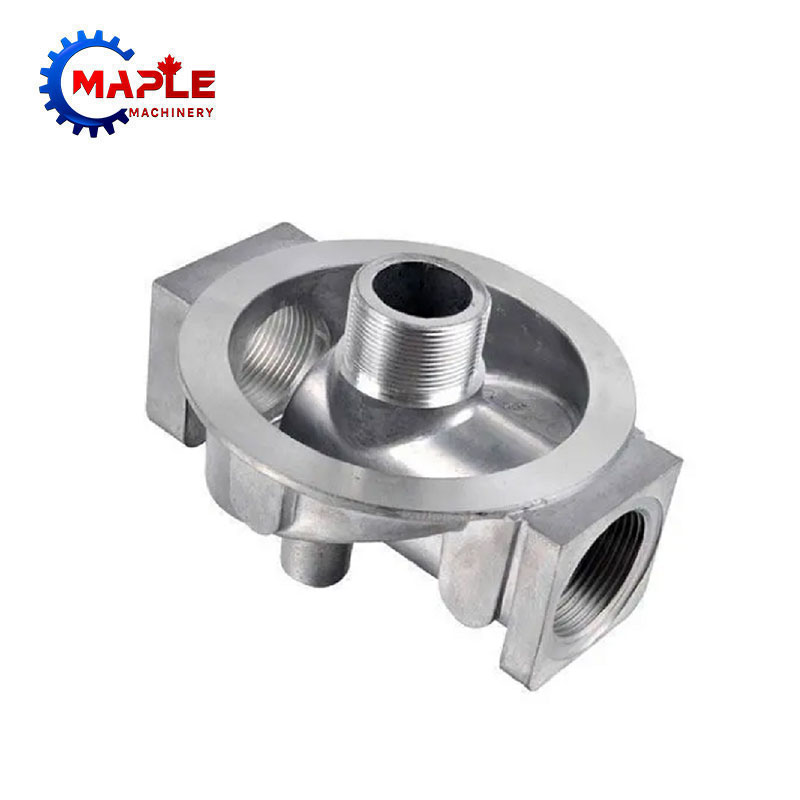Introduce the Investment Casting in detail
2023-10-17
Investment casting, also known as lost-wax casting, is a precision casting process used to produce complex and intricate metal components with excellent surface finish and dimensional accuracy. It is a versatile manufacturing method that has been employed for centuries and is still widely used today in various industries.
Here are the key details about investment casting:
Process:
The investment casting process involves several steps:
1. Pattern Creation: A pattern, typically made of wax or a thermoplastic material, is produced to replicate the desired final shape of the metal component. The pattern may be created using various methods, including injection molding, machining, or manual sculpting.
2. Assembly and Shell Formation: The pattern is attached to a gating system, which includes channels for the flow of molten metal and vents for the escape of air. The pattern assembly is then coated with a ceramic shell material through multiple dips, allowing each layer to dry before the next one is applied. This forms a ceramic shell around the pattern.
3. Dewaxing: The ceramic shell assembly is heated to a high temperature, causing the wax or thermoplastic pattern to melt and drain out, leaving behind a hollow cavity in the ceramic shell.
4. Preheating: The ceramic shell is preheated to remove any remaining moisture and increase its strength before metal pouring.
5. Metal Pouring: Molten metal, typically a high-temperature alloy such as steel, aluminum, bronze, or titanium, is poured into the preheated ceramic shell. The metal fills the cavity, taking the shape of the pattern.
6. Solidification and Cooling: The molten metal solidifies and cools within the ceramic shell, conforming to the intricate details of the pattern and forming a solid metal component.
7. Shell Removal and Finishing: Once the metal has cooled, the ceramic shell is removed by either mechanical means, such as vibration or sandblasting, or through a chemical process. The resulting casting is then cleaned, inspected, and may undergo additional finishing operations like machining, heat treatment, or surface treatments, depending on the desired specifications.
Advantages of Investment Casting:
1. Design Flexibility: Investment casting allows for the production of highly complex and intricate parts with thin walls, fine details, and internal features that may be difficult or impossible to achieve through other manufacturing methods. It offers design freedom and versatility in creating components with unique shapes and geometries.
2. Excellent Surface Finish: Investment casting provides a superior surface finish with minimal post-processing required. The ceramic shell produces smooth and detailed surfaces, reducing the need for additional machining or finishing operations.
3. Dimensional Accuracy: The investment casting process offers tight dimensional tolerances, resulting in components with precise and consistent dimensions. This accuracy allows for proper fit and assembly of parts without the need for extensive modifications.
4. Wide Range of Materials: Investment casting can be performed with a variety of metals and alloys, including stainless steel, carbon steel, aluminum, bronze, and titanium. This versatility enables the production of components with specific mechanical, thermal, or chemical properties to meet various application requirements.
5. Cost-Effective for Small to Medium Production Runs: Investment casting is economically viable for both small and medium production runs due to its ability to create complex parts in a single process. It eliminates the need for multiple assembly or machining operations, reducing production time and cost.
Applications:
Investment casting is utilized in a wide range of industries and applications, including:
1. Aerospace and Defense: Investment casting is commonly used to manufacture components for aircraft engines, turbine blades, aerospace structures, and defense equipment.
2. Automotive: Investment casting is employed to produce engine parts, transmission components, turbocharger impellers, and other critical automotive components.
3. Medical and Dental: The process is used to manufacture medical implants, dental prosthetics, surgical instruments,and other medical devices requiring intricate and biocompatible designs.
4. Energy: Investment casting is utilized in the production of components for power generation equipment, oil and gas exploration, and renewable energy systems.
5. Jewelry and Art: The lost-wax casting technique, a variation of investment casting, is employed in the creation of intricate jewelry pieces and artistic sculptures.
In summary, investment casting, or lost-wax casting, is a precise manufacturing process used to produce complex metal components with excellent surface finish and dimensional accuracy. It offers design flexibility, tight tolerances, and the ability to work with a wide range of materials. Investment casting finds applications in industries such as aerospace, automotive, medical, energy, and art, where intricate and high-quality components are required.



